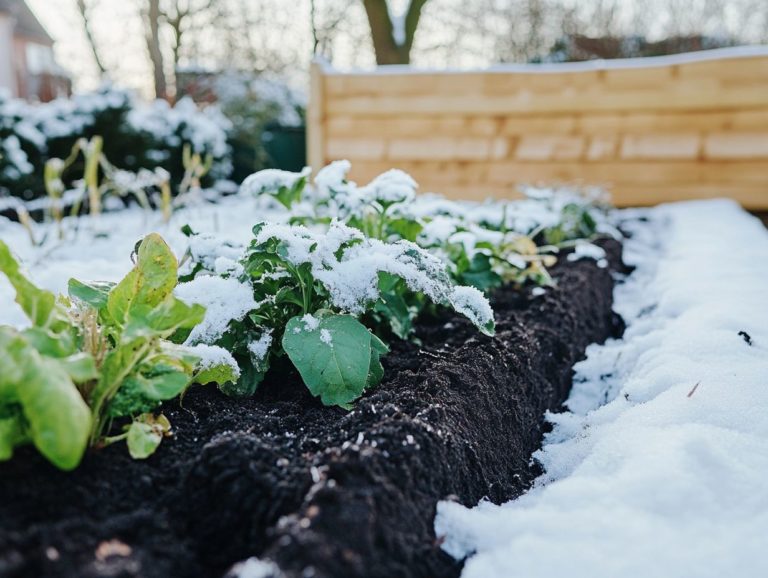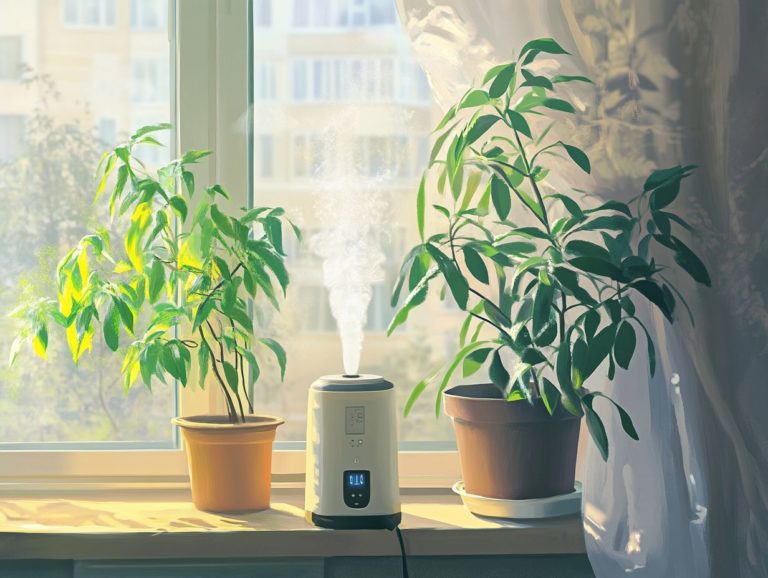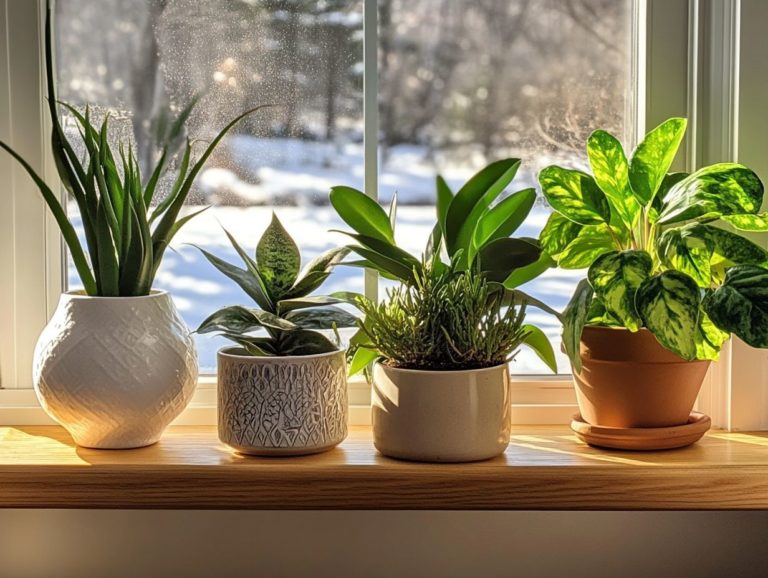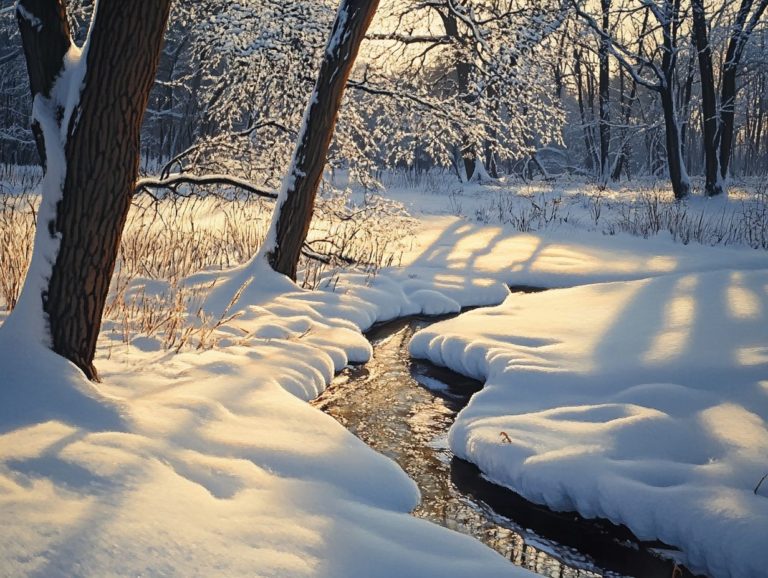Best Practices for Winter Watering
Winter can pose quite a challenge for you as a gardener, requiring extra care for your plants even while they re in their dormant phase.
Understanding the importance of winter watering is essential for ensuring your plants not only survive but thrive during the colder months. This article delves into the effects of chilly weather on your plants, guiding you on when and how to water effectively. You will also uncover common pitfalls to avoid and explore alternative methods to keep your greenery well-hydrated. Dive in and discover the best practices for winter watering and keep your garden thriving!
Contents
- Proper Techniques for Winter Watering
- Tools for Winter Watering
- Preventing Winter Watering Mistakes
- Alternative Methods for Winter Watering
- Frequently Asked Questions
- What are the best practices for winter watering?
- How often should I water my plants during winter?
- What is the proper way to water plants during winter?
- Should I water on days when it snows?
- What are some signs that my plants need more water during winter?
- Can I use cold tap water to water my plants during winter?
Key Takeaways:
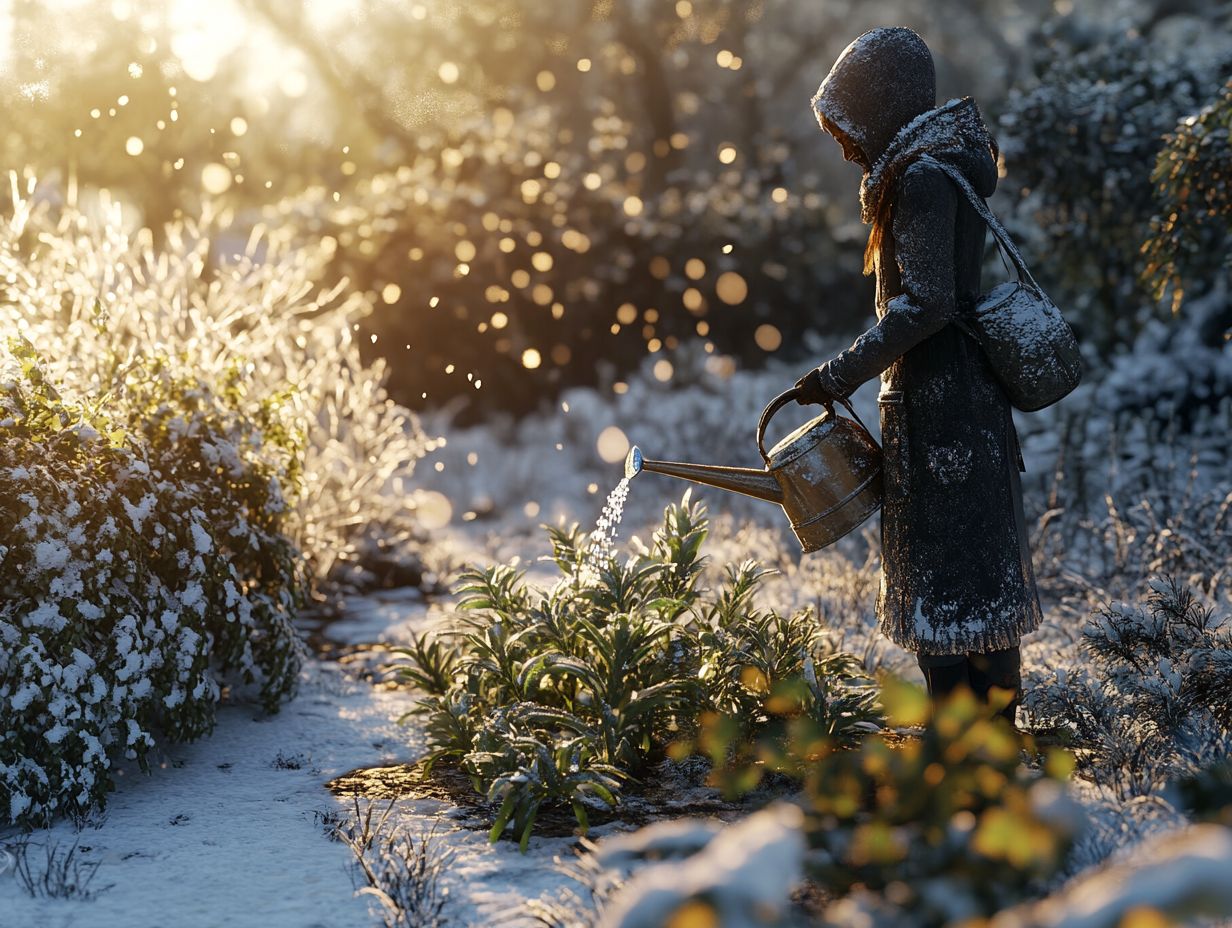
- Proper winter watering is crucial for plant survival during the cold season.
- Understanding plant dormancy (a period when plants are not actively growing) and adjusting watering schedules accordingly is key to successful winter watering.
- Using the right tools and techniques can prevent common mistakes and keep plants hydrated during winter months.
Why Winter Watering is Important
Winter watering plays a pivotal role in preserving the health of your garden plants, including evergreens, deciduous trees, and newly planted specimens. This essential practice fosters strong root systems that can endure dry spells and winter droughts.
As temperatures dip and soil moisture becomes scarce, recognizing the importance of adequate watering during this dormant period is crucial for ensuring that your landscape flourishes come spring. By emphasizing water conservation and adopting a strategic watering approach, you can promote a vibrant lawn even in the coldest months.
Effects of Cold Weather on Plants
Cold weather can significantly impact plants, bringing about risks such as moisture loss from the soil, which may compromise their health and winter survival, particularly for both evergreens and dormant varieties.
As temperatures drop, so do soil temperatures, which can hinder root growth and nutrient absorption. This makes it challenging for plants to flourish. The cold air further accelerates moisture loss through evaporation and transpiration, intensifying stress on the plants.
For anyone tasked with maintaining a garden, it’s crucial to adopt strategies to counter these negative effects. Implementing mulch layers can serve as an effective insulator for the soil, helping to maintain moisture levels and regulate temperature fluctuations.
Regularly checking soil moisture levels will provide valuable insights into when irrigation may be necessary. This ensures that your plants remain adequately hydrated, even in the chillier months.
When to Water in Winter
Understanding when to water your plants during the winter months is crucial for their health. It often hinges on the ever-changing air temperatures and soil moisture levels, alongside the unique watering requirements of dormant plants. By paying attention to these factors, you can ensure your plants thrive even in the colder season.
Understanding Plant Dormancy
Understanding plant dormancy is essential when you’re planning your winter watering. During this time, many plants are conserving energy and need less water. However, it s important to ensure their root systems remain adequately hydrated.
This phenomenon is especially common among various species, particularly deciduous trees and perennial flowers, as they enter a state of reduced metabolic activity. While it might appear that these plants can thrive solely on stored moisture, their roots still absorb water though at a slower rate to prevent desiccation (drying out). It s crucial for you to monitor soil conditions, ensuring moisture levels stay balanced particularly for young plants establishing themselves and for more mature specimens that, although more resilient, still appreciate consistent hydration.
Maintaining proper soil moisture not only supports healthy regrowth but also prepares these plants to flourish when spring arrives.
How to Water in Winter
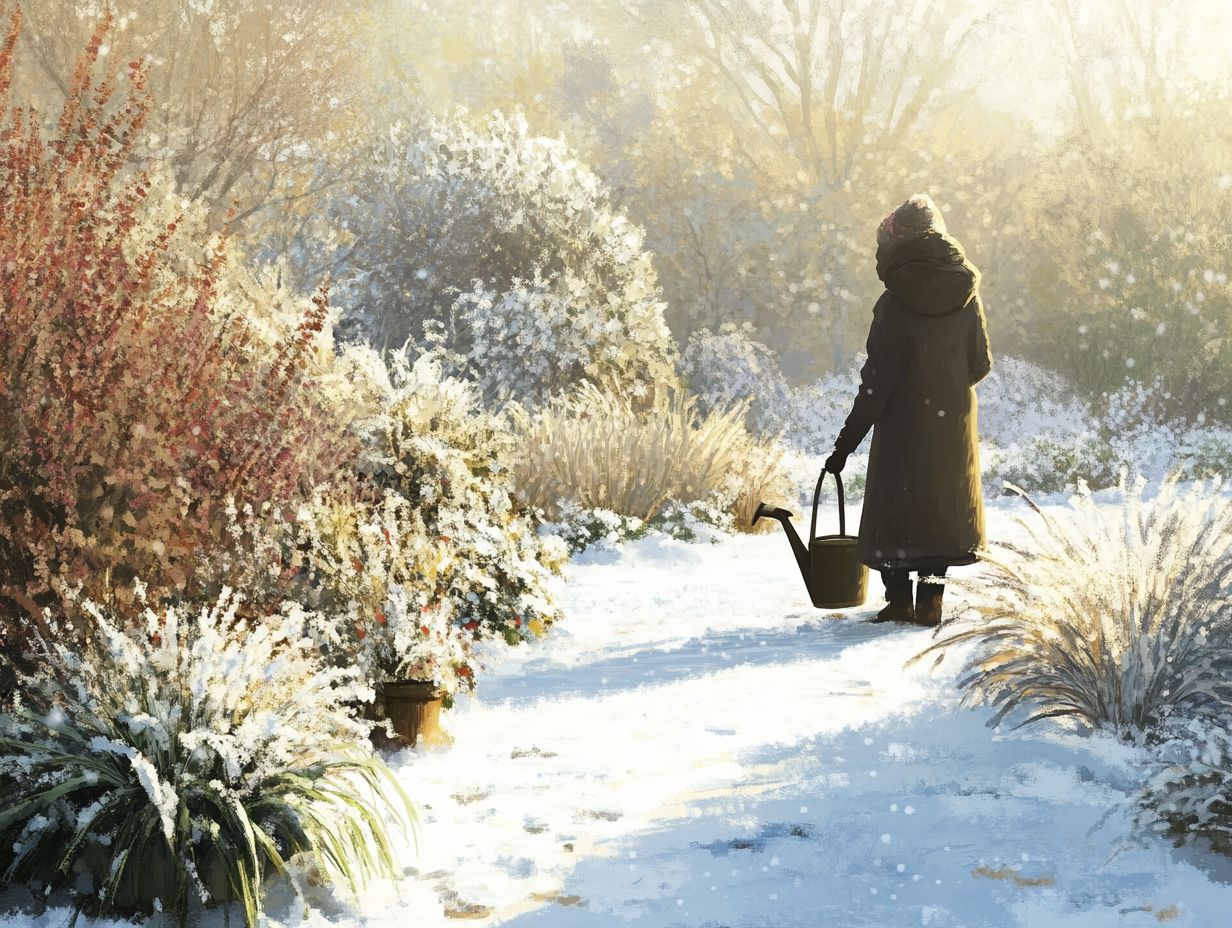
Implementing effective winter watering techniques is essential for maintaining healthy hydration practices that enhance moisture retention and support the vitality of your landscape plants. For detailed guidance, learn how to manage watering in cold-climate gardens, especially during the colder months when water needs can vary significantly.
Start implementing these winter watering techniques today to ensure a lush garden come spring!
Proper Techniques for Winter Watering
Proper winter watering techniques require a strategic mindset regarding both frequency and depth. For optimal results, it’s essential to follow best practices for winter gardening. This approach ensures that even dormant plants receive the hydration they need to support their root systems.
To begin, assess the moisture levels in your soil. These can vary widely based on factors such as the type of plants you have, your local climate, and the soil composition. A tool that measures how wet your soil is can be invaluable, revealing how deeply water has penetrated and whether your roots are receiving adequate hydration.
Understanding this can make a real difference, as different plants have unique moisture requirements. Adapting your watering techniques to meet those needs is crucial.
Take succulents, for example they flourish with less frequent watering. In contrast, certain shrubs may require regular checks to prevent dryness during frosty spells. This tailored approach not only promotes healthier plants but also conserves both water and energy.
Tools for Winter Watering
Choosing the right tools for winter watering can greatly improve how you take care of your garden. This ensures that your plants receive the essential hydration they need while minimizing water loss, particularly in challenging winter conditions.
Recommended Equipment
In terms of winter watering, selecting the right equipment like irrigation systems or water-saving tools can significantly enhance both the efficiency and effectiveness of your watering routines.
A well-chosen irrigation system guarantees that your plants receive the essential hydration they need without wasting water. For example, drip irrigation is particularly advantageous in winter; it delivers water straight to the roots, minimizing evaporation. Incorporating a timer into your setup can be a game changer, automating your watering schedule and ensuring consistent moisture levels even during colder months when outdoor watering tends to dwindle.
Frost-proof hoses are essential; they remain operational in freezing temperatures, preventing bursts and saving you from the hassle of disconnecting and thawing regular hoses. By utilizing these tools thoughtfully, you can cultivate a thriving landscape and a productive garden throughout the winter season.
Preventing Winter Watering Mistakes
Preventing winter watering mistakes is crucial for maintaining a lush, healthy lawn. By avoiding common pitfalls, you can ensure that your lawn receives the right amount of hydration during those critical winter months, safeguarding against excessive moisture loss or insufficient watering.
Common Pitfalls and How to Avoid Them
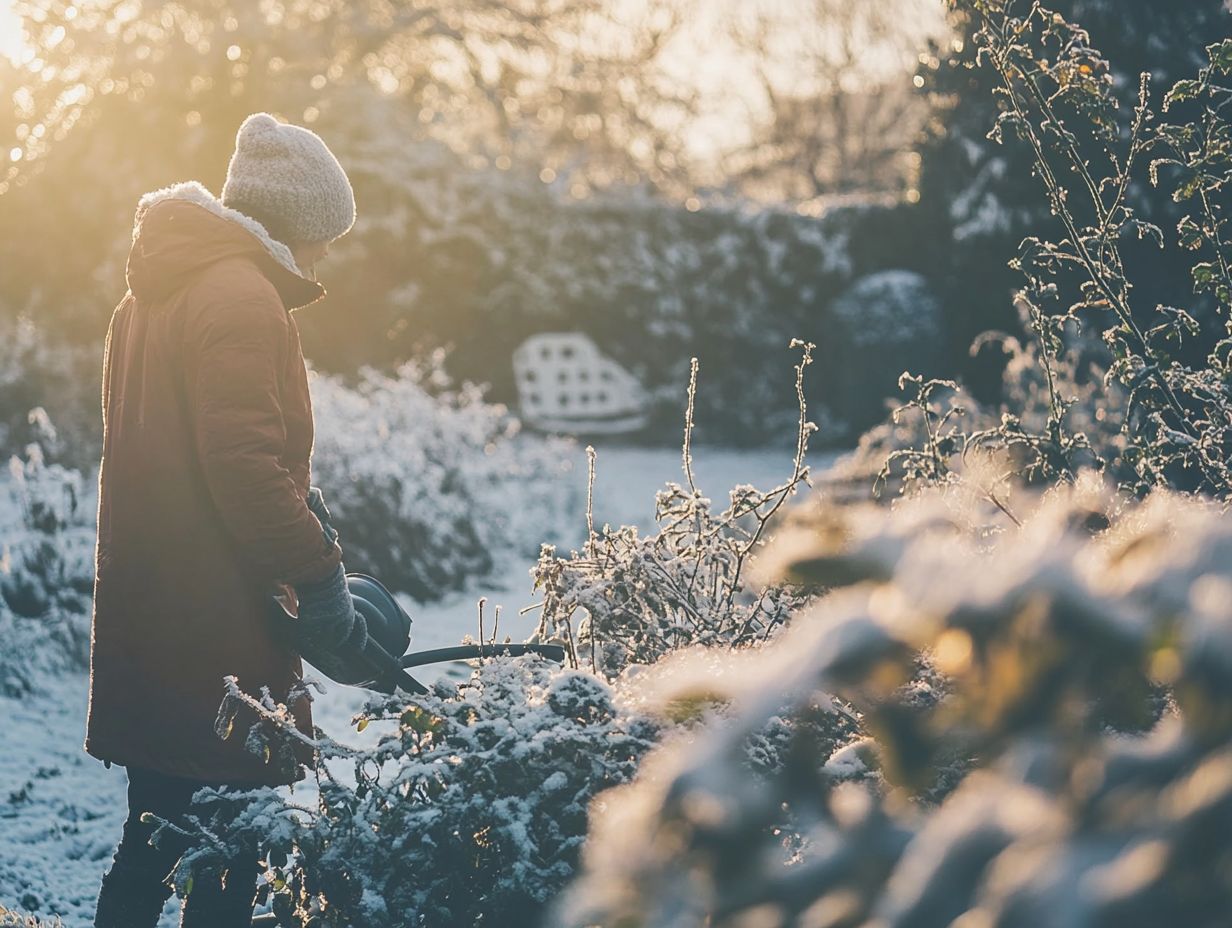
Common pitfalls in winter watering include the risk of overwatering, which can lead to moisture loss or root rot, and under-watering, which may compromise the health of dormant plants.
These mistakes create a precarious balance, making it challenging for your plants to thrive, especially when the cold weather disrupts their natural moisture levels. To steer clear of these issues, check the soil’s moisture content regularly, ensuring adequate drainage to prevent waterlogging.
During winter, watering less frequently perhaps every two to four weeks depending on the weather can be quite beneficial.
Incorporating strategies like using mulch to retain soil moisture can further bolster your plants’ health throughout the chilly months, helping them remain vibrant and resilient when spring arrives.
Alternative Methods for Winter Watering
Exploring alternative methods for winter watering opens the door to innovative solutions that ensure your plants receive adequate hydration. Additionally, understanding best practices for pruning in winter can enhance moisture retention and minimize the risk of freezing temperatures disrupting your watering schedule, allowing you to cultivate a thriving garden even in the harshest of winters.
Don’t wait! Prepare your plants for winter now! Start implementing these tips today and watch your garden thrive all winter long!
Other Ways to Keep Plants Hydrated in Winter
In addition to traditional watering, there are several ways to keep your plants hydrated in winter. Using organic mulch helps retain moisture in the soil and keeps temperatures stable.
Consider adding moisture with pebble trays filled with water or misting the leaves. These methods are great for plants that love humidity.
Use a mix of watering techniques. Deep watering is excellent for established plants, while gentle surface watering works best for seedlings.
Knowing your plants’ needs helps you choose the best hydration methods. This ensures they stay healthy and vibrant during the cold months.
Frequently Asked Questions
What are the best practices for winter watering?
Water deeply but less often. Pay attention to the weather and your plants’ needs.
How often should I water my plants during winter?
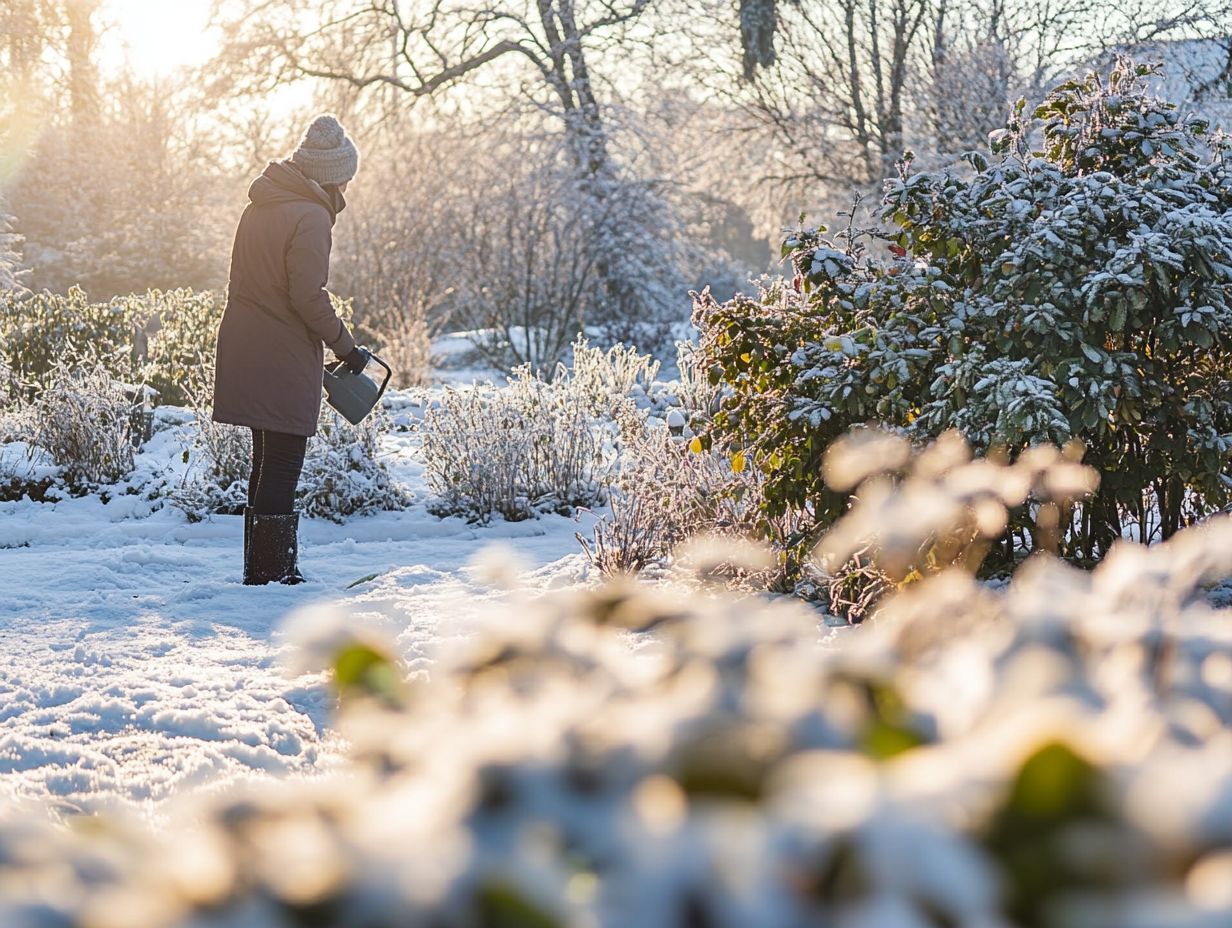
Water your plants about every 2-3 weeks. This will give them enough moisture without making the soil soggy.
What is the proper way to water plants during winter?
Water at the base of the plant. This helps prevent disease and keeps moisture where it’s needed.
Should I water on days when it snows?
No need to water when it snows. Snow gives moisture to plants and insulates the soil.
What are some signs that my plants need more water during winter?
Look for wilting leaves, yellowing, or dry soil. Be careful not to over-water, as that can also harm your plants.
Can I use cold tap water to water my plants during winter?
Use room temperature water. Cold water can shock the roots and harm delicate foliage.

